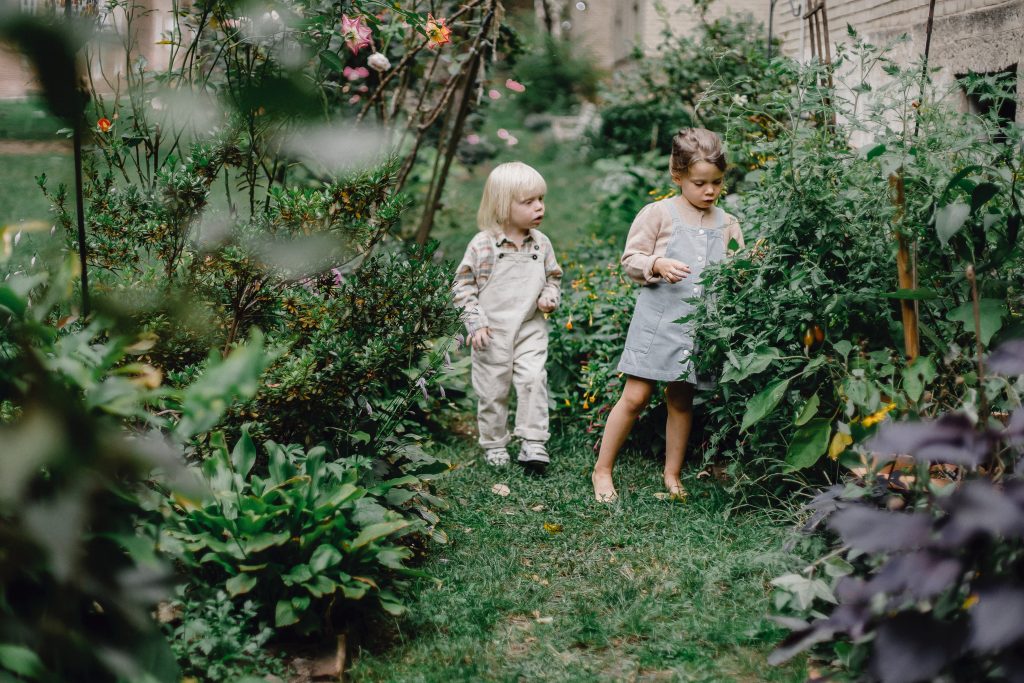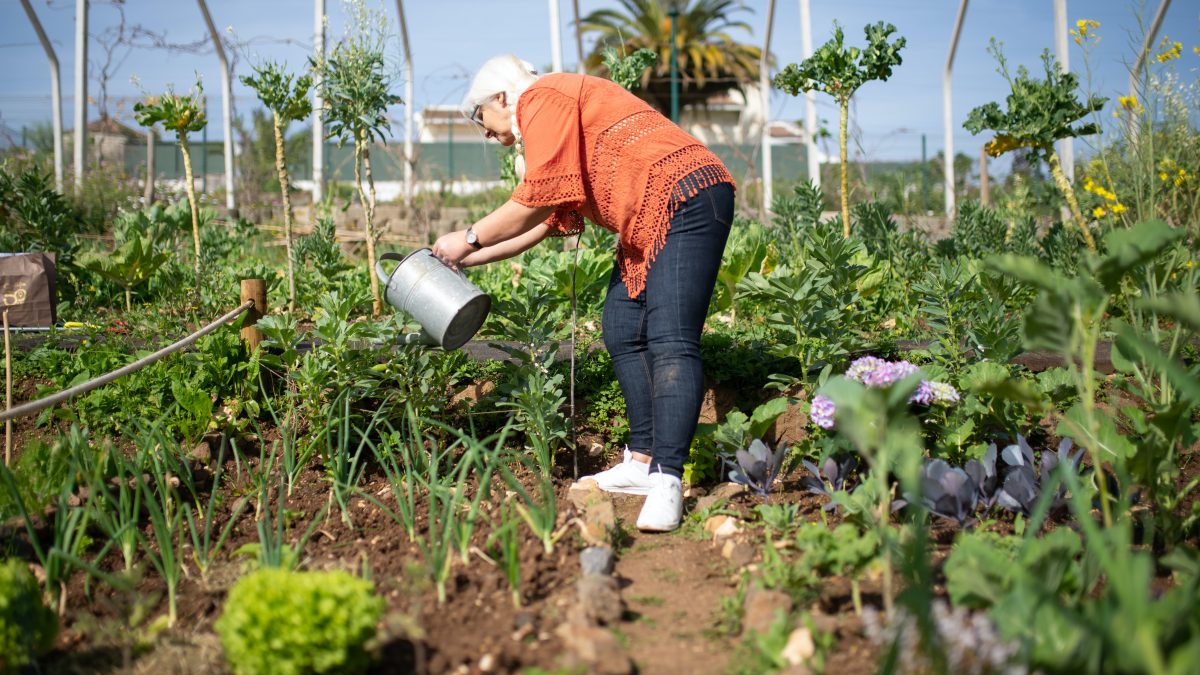Read about how one suburb created a community garden that demonstrates a permaculture response to land repair, community fellowship, and growing food.

A “Simple” Community Garden
Our community garden is on a college campus high on a ridge overlooking the Ohio River near Cincinnati, Ohio, USA. I arrived on a brisk afternoon in December 2010.
“The garden should be just over the hill,” the chairman of the university’s Environmental Action Committee told me. “We should see a blue shed!”
It took us a while to find the site. On a hillside below a parking lot, and behind some trees, it was hidden from view with limited access. Tires, garbage, and invasive honeysuckle covered the hillside.
My heart sank.
It’s a powerful exercise for me to think back on that day. My excitement was immediately shadowed by despair. Finally, after some reflection, I decided to meet the land and the community on a journey of discovery.
My hope was that it would yield a rich bounty of relationships and camaraderie.
My simple plan was to bring people together to grow vegetables, but it would ultimately do much more.
Taking cues from the forest around us, we designed a garden that stacked functions. Growing food, building relationships, and restoring a small piece of land are all interconnected.
Yet, multi-functionality was not on my mind that December day.
My original vision was simplistic, like a typical community garden layout. I was looking for a flat, cleared space on which to build a few raised beds.
Identifying the need for a Community Garden
Before I moved to the suburban township where this garden thrived, I lived in a leafy neighborhood. Places where people gathered were ubiquitous: cafes, restaurants, parks, and gardens. In our new-to-us bedroom community in Cincinnati’s western suburbs I felt trapped and isolated.
Our neighbors seemed to keep to themselves, even though we lived on postage-stamp sized lots. We drove to the grocery (0.4 miles) because it wasn’t a safe or pleasant walk.
My selfish goal was to meet like-minded people, all while doing something I enjoyed that added value to the community.
Finding Land for a Community Garden
My first thought was to approach the township about unused space at one of the parks.
The location I had in mind was flat, sunny, visible from the road, and had good accessibility and parking. It was on the land of a public floral garden, where master gardeners worked with volunteers to maintain a carefully groomed space. Cut-flower greenhouses once blanketed the township, and this garden was a memorial to that legacy.
Growing Community Against Steep Odds: A Community Garden Story

